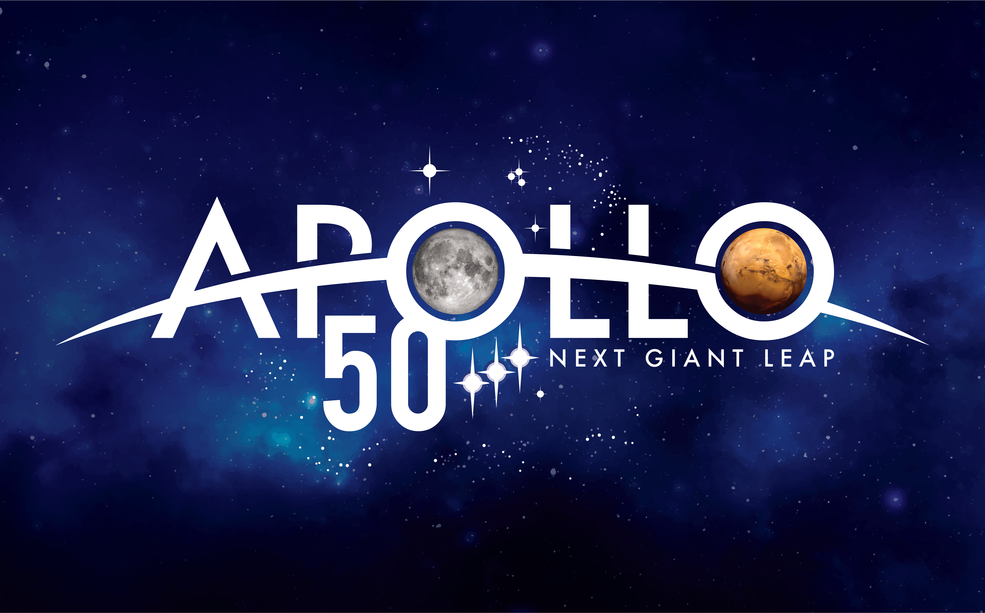On May 14, roughly 50 years since humanity first set foot on the lunar surface, NASA confirmed that they will bring humans back to the moon by 2024.
Jim Bridenstine, the administrator for NASA, proclaimed, “We are going to the moon to inspire the next generation… to advance our understanding of the universe so that we can share the benefits with all, here and now.”
In this new lunar endeavor, dubbed Artemis, the twin sister of Apollo in Greek mythology, NASA plans to establish sustainable manned missions and explorations of the lunar surface to uncover useful materials and develop technologies that ultimately will assist the journey toward Mars.
The original Apollo missions were ambitious in their task, yet were motivated by different reasons. In the early ages of Space exploration, the United States and the Soviet Union were in the midst of a bitter international rivalry known today as the Cold War.
The National Aeronautics and Space Administration, or NASA, was created by President Dwight Eisenhower in response to the Soviet Union launching the first man-made satellite, Sputnik, in the 1950s. The following race to space and the moon between these two countries was meant to demonstrate national strength.
Through these political motives, NASA received the funding to make the Apollo program a success, fulfilled with Neil Armstrong’s historic first step, and continued until its last mission, Apollo 17 in 1972.
Without the Cold War funding and with dwindling public interest, NASA struggled to find the funding necessary to return back to our revolving neighbor.
According to Physics teacher Tony Dunn ’82, NASA continues to face a dire financial situation, for the vast amount of staff needed to work on the project alone can be an issue of concern, let alone the resources used in the manufacturing and fuel of the rockets.
A future with humans back on the moon mostly depends on the current whims of the politicians and the state of the government economy. Because of the many current economic issues affecting the nation, the government often removes costly funds from those with less priority, like NASA.
Dunn said, “When a president promises to return to the moon, the next president often cuts it.” “Without a Space Race right now, it will never get the funding.”
President Barack Obama cut funding for George W. Bush’s Constellation Program, which aimed to get humanity back to the moon as a stepping stone to Mars, similar to the current Artemis Program.
According to Space.com, the official review known as the Review of United States Human Spaceflight Plans Committee, foundonNASA’swebsite, deemed the Constellation program is too behind schedule and overfunded to be able to achieve its goals. The report states, “Under the FY 2010 budget, the lunar landing and surface systems will also be delayed by over a decade, indicating that human lunar return could not occur until well into the 2030s.”
Mirroring this is President Donald Trump’s cryptic tweet in June of this year, which denies NASA going to the moon.
Despite these political setbacks, NASA stays determined to get to and stay on the moon with new strategies and more efficient technology. NASA is supporting efforts to commercialize low Earth orbit to make ventures such as launching to the International Space Station more cost-effective. Programs such as the Commercial Resupply and Commercial Crew Program make it possible for American companies to contribute to the industry of low Earth orbit.
Some of the new technology under development includes NASA’s Space Launch System (SLS) and the Orion Multipurpose Crew Vehicle; both are leftovers of the Constellation Project. The SLS is planned to be the most powerful rocket ever built, topping the previous title holder used in the Apollo missions, the Saturn V. The Orion Spacecraft is the capsule designed to harbor humans beyond low Earth orbit into deep space.
The first planned, uncrewed test flight of these two systems is scheduled to take place between 2020 and 2021 under the name Artemis 1, or Exploration Mission 1. In this multi-staged mission, the Orion Spacecraft will enter orbit around the moon for six days and become the farthest spacecraft capable of manned flight, with its farthest point being 1,000 times farther from Earth than the International Space Station.
For sustained missions and eventual bases on the moon, NASA has the Gateway. As the name implies, Gateway is a proposed lunar orbiter that is meant to serve as an access point to the moon. Gateway will be built in stages: a foundation is scheduled for completion in 2024 and later modules will gradually develop the orbiter with succeeding missions. Eventually, the Gateway is planned to mirror a Space Station around the moon.
The Artemis Program is developed with the end goal of Mars in mind, as many of the feats and achievements that will go into establishing a moon base will be instrumental, if not vital, in humanity’s journey to the red planet.
The Review of United States Human Space Flight Plans Committee further states, “While Mars is the ultimate destination for the near-term human exploration of space, it is not an easy place to visit with existing technology and experience. No human has ever traveled more than three days from Earth, and none beyond 386 miles away for almost 40 years.”
It further stated, “No American has been in space much more than 180 days at a time, or exposed to the full radiation of free space for more than about a week. Mars requires a trip in space of almost 900 days. We do not have flight-demonstrated technology to confidently approach and land a large spacecraft on the Mars surface. However, most of the Mars systems can be tested on the Moon, making the Moon not only a conceptual testbed but also an actual testbed for Mars systems.”
As well as serving as a trial site for Mars, the moon can also be a literal stepping stone. The scavengable resources and reduced gravity can produce needed materials and propel spacecraft.
Dunn said, “We could launch from the Moon. The Moon has one-sixth of the Earth’s gravity. The moon has a lot of resources.” Ultimately, the Artemis Program hopes to pave the way for exploration of not only the Moon but greater exploration of the entire solar system.
In 2019, 50 years after the first small step and after 40 years of relative inactivity, humanity endeavors to continue its legacy toward the stars, first returning to Earth’s nearest celestial neighbor, and later expanding to explore the solar system and the greater universe.









